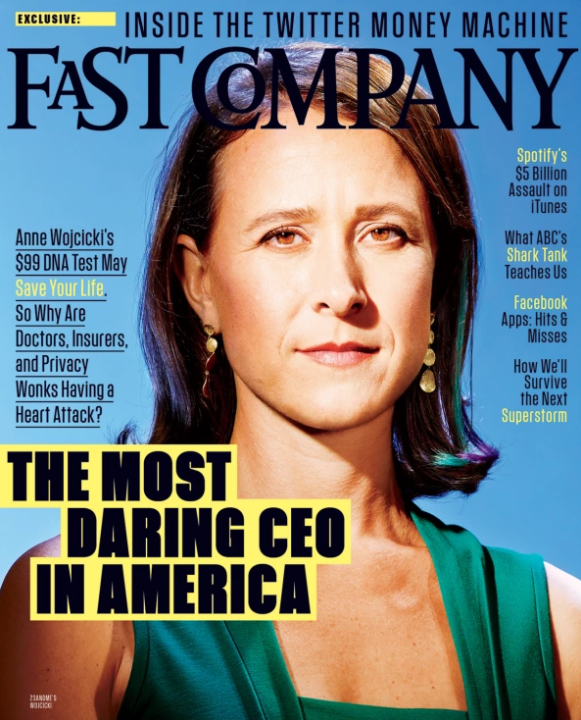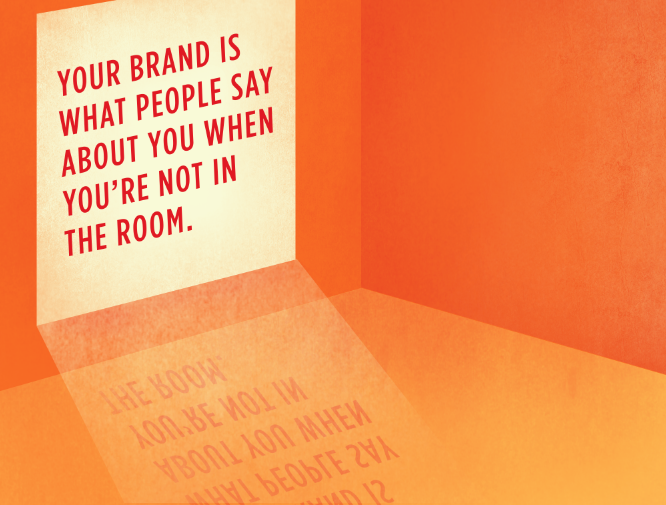By
James Nieman | 09/27/2017 | in

In the fifteenth installment of the A-List Podcast, host and DiMassimo Goldstein CCO Tom Christmann is joined by Omid Farhang, the chief creative officer at experiential agency Momentum Worldwide. Over the course of forty-five minutes, Farhang quotes the Wu-Tang Clan, talks about growing up as the child of an Iranian cowboy, and shares some of the most valuable lessons he learned working under and alongside the biggest names in the industry. Full episode and show notes below!
- [0:00 — 1:36] Intro
- [1:37 — 8:05] Farhang tells Tom about growing up the child of an Iranian cowboy, and the pressure he felt to become a doctor or a lawyer
- [8:06 – 11: 53] How Farhang discovered advertising, and the emotions that ran through his head when he first walked into the Chiat\Day office
- [11:54 – 18:14] How the Honda “Grrr” spot inspired him to go into advertising
- [18:15 – 20:55] Wanting to be a writer and going to ad school with a sense of purpose and urgency
- [20:56 – 22:55] How the definition of titles is changing in the industry, what he learned from the Wu-Tang Clan, and how he has been influenced by comedy and hip hop
- [22:56 – 27:25] Starting as an intern at Crispin Porter + Bogusky, living in a basement, and the benefit of writing 200 headlines
- [27:26 — 31:18] The lessons Farhang learned working as a young creative on Miller High Life
- [31:19 — 36:12] Farhang walks us through his plea to Alex Bogusky for a full-time gig and why he dropped out of ad school without a job
- [36:13 – 38:37] The interview process toward becoming a first time CCO, Momentum Worldwide, and the power of an honest business relationship
- [38:38 – 41:00] Working with the children of NBA superstars for SAP’s “The Simple Report”
- [41:01 – 46:00] The benefits of freelancing, releasing ideas into the wild and experiential advertising
- [46:01 – 47:50] What “Malicious Obedience” is, and how young creatives can avoid it
- [47:51 – 48:45] Outro
“The A-List” is a podcast produced by DiMassimo Goldstein, recorded at the Gramercy Post, and sponsored by the Adhouse Advertising School, New York’s newest, smallest, and hippest ad school. You can subscribe and rate the show on iTunes or listen along on SoundCloud. For updates on upcoming episodes and guests, be sure to like the A-List Podcast on Facebook and follow host Tom Christmann on Twitter.
By
James Nieman | 09/21/2017 | in
If you could give people access to their own DNA, and interpret what it could potentially mean for their health in the future — would they change the way they lived? Would they exercise more? Make alterations to their diet? Stop smoking?
Would they change the way they behave everyday?
That’s the bet that Anne Wojcicki waged when she started 23andMe, a world-changing, first of its kind direct-to-consumer genetic testing company that aims to shift the way we think about healthcare from its current diagnostic model to one based on prevention.
Before launching 23andMe, Wojcicki had already led a successful career as a health care analyst on Wall Street. This career path also came with a front-row seat to the red tape and lack of action that was plaguing the health care industry. Convinced that America needed a more efficient and more consumer-focused way to treat illness and invent drugs, she decided to pioneer a path forward. By founding 23andMe, she made championing that change her life purpose.
 It’s a mission that landed her on the front page of Fast Company, accompanied by the bold headline “The Most Daring CEO in America.”
It’s a mission that landed her on the front page of Fast Company, accompanied by the bold headline “The Most Daring CEO in America.”
“We’re not just looking to get a venture-capital return.” Wojcicki told Fast Company. “We set out with this company to revolutionize health care.”
23andMe’s $999 saliva kit, which was delivered right to customers’ doorstep, allowed consumers to track their ancestry. It analyzed their DNA, tested for 254 health risks, and alerted consumers on their susceptibility to certain diseases – all without having to go to a doctor. Just a few weeks after submitting your kit, the results would come in with tips and guidance on how to reduce those health risks. Wojcicki was using technology to shorten the cycle of optimization.
Having this type of information could potentially spur people to make healthier lifestyle choices. Learning that you are at a higher risk for a certain disease, simply because of your genetics may propel you to mitigate that risk by making changes where you can, like quitting smoking or beginning to exercise more.
After a blazing hot start, the company’s personal genome test kit would go on to be named “Invention of the Year” by Time Magazine in 2008 – just two years after the brand was launched.
More venture capitalist funding came pouring in, and 23andMe drove the prices of its tests down from $999 in 2007, to $399 in 2008, to $99 in 2012. The product was intentionally being sold well below its marketplace cost, because the real growth potential, and the world-changing impact that comes with it, doesn’t lie in the saliva kits.
Instead, 23andMe was steadily building a gold mine of health and DNA data by building on its wide community of consumers – a valuable commodity to pharmaceutical companies, hospitals, and even governments.
Each consumer is asked to participate in research, with a clear majority of them providing consent. All of the information gathered is under anonymity, with no individual data being sold. Through partnerships, this aggregated data could now be used to research and discover cures for diseases that spring up from troublesome genetic mutations.
23andMe was disruptive. It utilized technology to supplant an ingrained habit with something that didn’t formerly exist. An entirely new experience – and one that was less expensive, more convenient, and more consumer-driven.
And the disruptive brand is one that is met with confusion, uncertainty and resistance – and, in November of 2013, that resistance came by way of the FDA.
With a harshly worded email, the U.S. Food and Drug Administration demanded 23andMe to withdraw all its tests for genetic risks related to health from the market – limiting the company to providing information about ancestry and ancestry alone.
23andMe had failed to communicate with the agency and meet their compliance standards – leading their health analysis to being terminated due to the USFDA’s growing concern of inaccurate results — and the consequences that come with it.
And while its popular ancestry product has brought us hundreds of heartwarming stories, like this man who gained an entire family from conducting the test, Wojcicki founded 23andMe with a higher purpose in mind.
She and her company were in a difficult spot. Following the moratorium, sign-ups had dropped by more than 50 percent. The company was barely surviving on their ancestry services. This was a sink-or-swim moment.

But Wojcicki was a challenger, and 23andMe was a challenger brand. She started the company with a vision, and she wasn’t going to separate what they were doing from why they were doing it. This was simply another problem she had to solve – and when you have an inspiring idea, nothing is insurmountable.
If 23andMe was going to survive, Wojcicki would have to find a way to cut through the red tape. With her back against the ropes, she and her team began working closely with the FDA.
Two years later, in 2015, the FDA granted 23andMe approval for a different kind of testing. This test would be focused on “carrier status” reports, which tell you if you have a copy of a mutated gene for a disease like cystic fibrosis or sickle cell anemia. The mutation would not affect the consumer directly, but it could affect their future children. Still, 23andMe was not authorized to tell the consumer about their personal risk.
A far cry from the 254 tests the company used to offer, the FDA decision was a still victory for 23andMe. It was the first step in the right direction, albeit a small one.
Determined to lift that bar even further, the 23andMe team continued to work closely with the FDA, and earlier this year that hard work was finally rewarded.
On April 6, 2017, the FDA came out with a press release allowing the marketing of 23andMe Personal Genome Service Genetic Health Risk (GHR) test for 10 disease or conditions, including Parkinson’s and Alzheimer’s disease.
This was a groundbreaking moment. The first direct-to-consumer test authorized by the FDA that provides information on an individual’s genetic predisposition to certain medical diseases or conditions.
Until that moment, the only way for people to get such genetic tests was to see a medical professional. Now, 23andMe consumers can log in to an online account and see their report and its interpretation. Behaviors were being changed.
Wojcicki discovered that she had to work with the FDA, rather than against them, to really drive that change. And in doing so, she proved that there is a market for direct-to-consumer health care.
The door is now open. The FDA has established new and less rigorous guidelines for approving at-home genetic testing, which will allow other direct-to-consumer health companies to enter the market with less resistance. Plenty of competitors are already waiting in the wings.
Today, the company is still growing rapidly. Its products have been used in several research projects, including studies on female fertility, depression, Parkinson’s disease, and even nail biting.
With a current valuation of $1.1 billion, the company now boasts well over two million customers. This past June they were ranked #4 on MIT Technology Review’s 50 Smartest Companies List – right behind Jeff Bezos’ Amazon and Elon Musk’s SpaceX.

Behavior change is hard to create – but courageous marketers who obsess over helping people make more inspiring decisions and live more empowering lives will stop at nothing to do so.
Anne Wojcicki is that type of inspiring action marketer.
That’s why 23andMe is our Inspiring Action Brand of the Month!
By
Team DIGO | 09/21/2017 | in

The most creative activity in many agencies is filling out time sheets.
For eighteen years, we have never done one. Here’s why:
1) We don’t want to reinforce the silly idea that what we sell is time. We sell results.
We take that seriously and stick to it. Our compensation agreements align with it as well, accepting risk and reward for creating marketplace results.
2) We don’t want the moral or legal hazard of a practice that is almost universally abused. A process that at best is a waste of the very time it purports to record and at worst is a fraud. Sometimes accountants are creative people, but creative people are rarely accountants.
3) We want to spend all of our time and energy on the stuff we’re good at, the things that return the most value for our client’s dollar. We always strive to deliver much more value than we capture in revenue. And our agreements, often with lower fees and bonus for market success, bear this out.
4) No one benefits from a culture of nickel and diming over time. Not clients, who will feel hesitant to use the team to the fullest extent for fear of additional changes. Not agency people, who come to value their contribution in billable hours rather than in winning work. We never charge more for “going over” hours. Because we don’t measure hours, we measure value.
By
Mark DiMassimo | 09/14/2017 | in

Branding is the process of building a coherent and distinct pattern of associations in the mind of a target audience.
When I say, “Apple,” a whole world of associations come up. When I say “Microsoft” a different world of associations come to mind. To the extent that both bring up associations, they have been “branded.” To the extent that those associations are clear, distinct, and helpful, they have been successfully branded.
Branding firms use culture, product, image, design, sound, voice, language, price, service, entertainment, celebrity, fashion, and interaction – an extremely broad range of tools – to build the brand. Today, the mission of an organization and the meaning of being associated with that mission is important to many people as well.
Too often, branding is associated with much more limited objectives. For example, logo and visual identity standards. While these are key tools for branding, they alone don’t create the brand.
Very often, when people use the word “brand” they are referring to what the company thinks and says about itself.
But brand is what other people say about you when you are not in the room. Brand is about what your audience feels about you in their heart of hearts. Your brand is not what you tell people it is, your brand is what people tell people it is. What you say is just your attempt to affect that understanding.
Today, brands are built by great products and services, first and foremost. In a world of online reviews, advertising and spin cannot trump a predominance of bad experiences. Not everyone, but your target audience must be delighted.
By
James Nieman | 09/13/2017 | in
In the past month, our country has been slammed by two catastrophic natural disasters in Hurricane Harvey and Hurricane Irma. While the storms have passed, the devastation has not. Millions of people have been affected, and thousands are still without food or shelter.
At DiMassimo Goldstein, we talk a lot about Inspiring Action, and there is no action more inspiring than helping people in times of distress. In the past few weeks, we have been inspired by the courageous and empathetic actions that many brands have taken to help those in need. When companies have the supplies and systems in place to respond quickly, they should – and these brands did just that and then some.

JetBlue has capped the fares of flights leaving South Florida and other parts of the country that are likely to see Irma’s fury, helping as many people as possible escape the devastation. These fares are available until September 13th. The company is also waiving fees for changes in reservations to travelers who have had to cancel flights due to the storm.
Airbnb launched their “Disaster Relief Program” in both Texas and Florida. The program, which assembles a list of hosts willing to open their homes for free, has helped thousands of people looking for emergency shelter following the hurricanes and flooding.
Verizon, Sprint, AT&T and T-Mobile have all waived overage charges for calls, texts, and data for its customers in Florida, helping people connect with family, check for weather updates, and follow the coverage of the storms on their phones.
Walmart has donated a total of $30 Million in relief for both Harvey and Irma. The company has also shipped thousands of trucks loaded with emergency supplies like water, batteries, generators, food, and first aid kits to hurricane impacted areas. Walmart will also match any donation that customers make at any Walmart or Sam’s Club.

Google provided real-time road closure information in its maps platform, which helped thousands as they had to make split decisions evacuating cities. The company also created a “digital survival kit”, pulling together about 20 mobile apps to help Floridians make it through the storm. The collection of apps included Hurricane Tracker, Family Locator, American Red Cross, GasBuddy, The Weather Channel, and Zello, which received six million users in one week as Florida prepared for the Hurricane.
After receiving requests for help, Tesla pushed a software update for those in evacuation areas that increased the battery capacity of some Model S Sedans and Model X SUVs, allowing the cars and those driving in them to go 30 to 40 miles farther on a single charge.
These companies showed love, courage, and understanding. They didn’t wait to react. They sacrificed sales and revenue to help others. They understood their power and responsibility, and used it to implement real on-the-ground solutions to acute and urgent needs.
Now that’s #inspiringaction!
By
Mark DiMassimo | 09/05/2017 | in

I can’t remember when I first became fascinated with brands, but I know I was just a young child. Back then, Cheerios and Wheaties, Esso and Shell, Little Friskies cat food, Avis Rent-a-Car, were like cartoon characters to me. They had distinct personalities and I felt like I knew them, just like I knew the characters in my favorite shows.
From the brands I learned to love on TV to the more mature brands I later grew to love. The rock bands I worshipped. The threat and allure of Disco, Punk, New Wave and beyond. The religions I was pitched at school, in the streets and at my front door. My first credit cards from Citibank and American Express. Nike and Apple.
What art form gives you all the senses to work with? Sight. Sound. Smell. Hearing. Touch. And story, imagination and emotion too?
The dream began to form in me of building brands the way Picasso made paintings, the way Frank Lloyd Wright made buildings, the way Edison made inventions. Could I give thought to every touch point, and express a distinct and attractive personality that would remain consistent without ever being boring or trite?
I wanted to learn from the best, so I went to work for the best in the business. I chose as my clients entrepreneurial masters of brand building. I never thought of myself as the master, but only as student and servant. I practiced my craft obsessively. I stayed up nights writing. I read every book. I invited my heroes to lunch, always trying to learn a bit more, to add another key.
Yes, all of that time, I was a direct marketer. All of that time, I was measured by how well my work pulled, by beating controls, by winning tests, by conquering the A/B splits.
I learned all the tricks, but my greatest trick of all and the most effective was the ability to evoke emotion through brand. “A great brand idea is the ultimate response device,” I said. And I proved it repeatedly.
I’ve watched a lot of direct brands and careers die since then. Simultaneously, I’ve watched the great direct-led brands become the leading brands of our time. American Express, Apple, Amazon, Airbnb … and that’s just the A’s!
Remember, if you are in the business of selling directly, don’t merely sell. Build a rich, evocative, emotional brand. Use every touch point to differentiate. Err on the side of too much personality. Crush apathy. Make objectivity impossible.
Just as I do, so many wildly successful marketers remember their first journey of brand discovery as the true commencement of their marketing careers. They look back on that quest to uncover the insight that can change and organize everything going forward. The way they followed the data to the customer journey and came back with the golden insight, then mined that inspiring idea for all it was worth.
It’s a revolution in a brand, in a business and in a marketer’s career. In fact, many marketers have told me, “That’s when I first felt like a real marketer.”
Let’s do marketing for real. Let’s build a masterpiece.
By
James Nieman | 08/22/2017 | in
Sallie Krawcheck had an inspiring idea:
Create a robo-advising platform specifically designed for women.
Like most inspiring ideas, it came from true aspiration — and few things mobilize and stimulate humans more than true human aspirations.
That aspiration? To help close the investment gender gap. But to truly understand the roots of Krawcheck’s aspirations, you must first understand her background.
As the former CEO of Merrill Lynch Wealth Management, and the CFO of Citigroup prior to that, Krawcheck spent much of her career being the only woman in the room. Finance is a “for men, by men” industry, and few people in the world have been as exposed to — or as outspoken about — that disparity as much as Krawcheck.
In regards to Wall Street’s unofficial mascot, Krawcheck asks Forbes, “Does it get any more male than that? Maybe a snake.”

The quantitative research is staggering. Just 16 percent of the nation’s 311,000 financial advisors are female. Due to this imbalance, investing is tailored towards men’s interests, leading women to put their money in the bank rather than invest it. Seventy-one percent of all assets controlled by women are held as uninvested cash.
To Krawcheck, this translates to “us boss ladies missing out on major market-gain opportunities and losing out on inflation.”
The reality is that the financial industry does not favor women. It doesn’t speak to their unique financial needs, or address their goals, or speak their language. Women aren’t as interested as men in “beating the market.” Instead, they prefer to think of their investments in terms of goals, like buying a home, starting a business, or paying off a student loan. And as a result, far too many women are sitting on the sidelines instead of making their money work harder for their dreams.
Frustrated and determined to make a difference, Krawcheck had her insight: Make investing seem like a game worth playing by making it appear less like a game.
In 2014, she put that insight to action by launching Ellevest, a female-focused robo-advising platform.
Unlike other robo-advising platforms, Elllevest puts women first. Krawcheck and her team spent over 100 hours interviewing women to ensure that the entire user experience was geared toward the way women think about their money. It connects with the female investor on a deeper, more psychographic level by putting a hyper focus on the realities of being a woman — for example, the greater likelihood of women taking time out of the workforce. Or the fact that their salaries, in general, tend be lower over the course of their careers despite peaking earlier than men’s. It considers the five extra years of a woman’s lifespan when planning for retirement. All of these factors should have a strong influence on investing strategies, and yet Ellevest is the only company making an active effort to recognize them.
And it’s working. This past March, Ellevest had over 3,000 accounts with $18 million in assets.
Krawcheck has created a brand that allows women to inspire action in themselves. She has given her consumers a self-actualizing experience, and nothing is more valuable to a consumer today. Opening an account with Ellevest means investing in yourself. It’s a company on an inspiring mission to close the investment gender gap, and women want to be a part of that story.
That’s why Ellevest is our Inspiring Action Brand of the Month!
By
Mark DiMassimo | 08/20/2017 | in
The following post is an excerpt from Digital@Speed, authored by digital marketing guru Mark DiMassimo. Visit the official website here to download your free copy today.

Optimizers have a way of seeing.
If I can’t get this across to you, then nothing else in this book will get you all the way there. You have to be able to project things forward in your mind. Like a chess master, to think trough the next few moves. You have to develop a feel for how things might go. The truth is, we all have this radar. It’s just human instinct. But some of us have better access to it than others.
This has been scientifically proven. If a threat – say a rat or a coyote – enters your peripheral vision, your little hairs will stand on end before you even consciously know what’s going on. Something in you knew, and reacted.
We know. Even when we think we don’t. Even when we’re so invested in the idea that we don’t that we’d swear to it ten ways to Sunday. We know.
We need a way of getting it out. I write a journal. I meditate. I play devil’s advocate with my partners and ask them to do the same with me. I indulge in focused worry sessions, to make sure i’m not missing anything.
Project forward, and optimize.



 It’s a mission that landed her on the front page of Fast Company, accompanied by the bold headline “The Most Daring CEO in America.”
It’s a mission that landed her on the front page of Fast Company, accompanied by the bold headline “The Most Daring CEO in America.”







